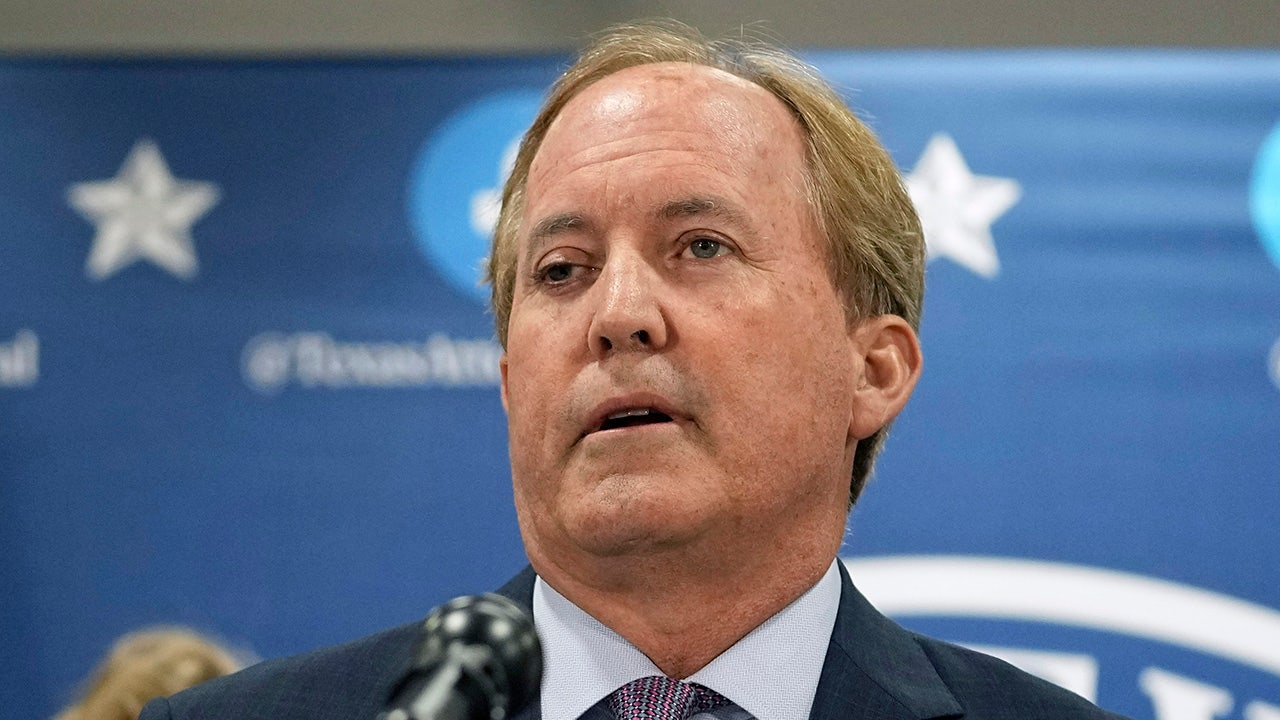Culture
Can You Name These Famous Short Stories Based on Their Descriptions?

Welcome to Lit Trivia, the Book Review’s multiple-choice quiz designed to test your knowledge of literature. This week’s installment asks you to identify the titles and authors of memorable short stories and novellas — based on a simple plot description. The answer section reveals a bit more about the work from articles in the Times archive. After the last question, you’ll find links to the novellas or story collections themselves if you’d like to read (or reread) them.

Culture
Book Review: ‘Hunger Like a Thirst,’ by Besha Rodell

HUNGER LIKE A THIRST: From Food Stamps to Fine Dining, a Restaurant Critic Finds Her Place at the Table, by Besha Rodell
Consider the food critic’s memoir. An author inevitably faces the threat of proportional imbalance: a glut of one (the tantalizing range of delicacies eaten) and want of the other (the nonprofessional life lived). And in this age of publicly documenting one’s every bite, it’s easier than ever to forget that to simply have dined, no matter how extravagantly, is not enough to make one interesting, or a story worth telling.
Fortunately, the life of Beshaleba River Puffin Rodell has been as unusual as her name. In fact, as she relays in the author’s note that opens “Hunger Like a Thirst,” a high school boyfriend believed she’d “made up her entire life story,” starting with her elaborate moniker.
Born in Australia on a farm called Narnia, she is the daughter of hippies. Her father, “a man of many lives and vocations,” was in his religious scholar phase, whence Beshaleba, an amalgamation of two Bible names, cometh.
Rodell’s mother returned to her native United States, with her children and new husband, when Besha was 14. Within the first 20-plus years of her life, she had bounced back and forth repeatedly between the two continents and, within the U.S., between multiple states. “‘I’m not from here’ is at the core of who I am,” she writes.
It’s also at the core of her work as a restaurant critic, and what, she convincingly argues, distinguishes her writing from that of many contemporaries. She has the distanced perspective of a foreigner, but also lacks the privilege of her counterparts, who are often male and frequently moneyed. “For better or for worse, this is the life that I have,” she writes. “The one in which a lady who can’t pay her utility bills can nonetheless go eat a big steak and drink martinis.” This, she believes, is her advantage: “Dining out was never something I took for granted.”
It started back in Narnia on the ninth birthday of her childhood best friend, who invited Rodell to tag along at a celebratory dinner at the town’s fanciest restaurant. Rodell was struck, not by the food, but by “the mesmerizing, intense luxury of it all.” From then on, despite or perhaps because of the financial stress that remains a constant in her life, she became committed to chasing that particular brand of enchantment, “the specific opulence of a very good restaurant. I never connected this longing to the goal of attaining wealth; in fact, it was the pantomiming that appealed.”
To become a writer who gets poorly compensated to dine at those very good restaurants required working multiple jobs, including, in her early days, at restaurants, while simultaneously taking on unpaid labor as an intern and attending classes.
Things didn’t get much easier once Rodell became a full-time critic and she achieved the milestones associated with industry success. She took over for Atlanta’s most-read restaurant reviewer, then for the Pulitzer-winning Jonathan Gold at L.A. Weekly. She was nominated for multiple James Beard Awards and won one for an article on the legacy of the 40-ounce bottle of malt liquor.
After moving back to Australia with her husband and son, she was hired to review restaurants for The New York Times’s Australia bureau, before becoming the global dining critic for both Food & Wine and Travel & Leisure. Juxtaposed against the jet-setting and meals taken at the world’s most rarefied restaurants is her “real” life, the one where she can barely make rent or afford groceries.
It turns out her outsider status has also left her well positioned to excavate the history of restaurant criticism and the role of those who have practiced it. She relays this with remarkable clarity and explains how it’s shaped her own work. (To illustrate how she’s put her own philosophy into practice, she includes examples of her writing.) It’s this analysis that renders Rodell’s book an essential read for anyone who’s interested in cultural criticism.
Packing all of the above into one book is a tall order, and if Rodell’s has a flaw, it’s in its structure. The moving parts can seem disjointed and, although the intention behind the structure is a meaningful one, the execution feels forced.
As she explains in her epilogue, she used the table of contents from Anthony Bourdain’s “Kitchen Confidential” as inspiration for her own. Titled “Tony,” the section is dedicated to him. But, however genuine the sentiment, to end on a man whose shadow looms so large detracts from her own story. (If anything, Rodell’s approach feels more aligned with the work of the Gen X feminist Liz Phair, whose lyric the book’s title borrows.)
It certainly shouldn’t deter anyone from reading it. Rodell’s memoir is a singular accomplishment. And if this publication were to hire her as a dining critic in New York, there would be no complaints from this reader.
HUNGER LIKE A THIRST: From Food Stamps to Fine Dining, a Restaurant Critic Finds Her Place at the Table | By Besha Rodell | Celadon | 272 pp. | $28.99
Culture
Book Review: ‘Original Sin,’ by Jake Tapper and Alex Thompson

ORIGINAL SIN: President Biden’s Decline, Its Cover-Up, and His Disastrous Choice to Run Again, by Jake Tapper and Alex Thompson
In Christian theology, original sin begins with Adam and Eve eating the forbidden fruit from the tree of knowledge. But Jake Tapper and Alex Thompson’s “Original Sin” chronicles a different fall from grace. The cover image is a black-and-white portrait of Joe Biden with a pair of hands clamped over his eyes. The biblical story is about the danger of innocent curiosity; the story in this new book is about the danger of willful ignorance.
“The original sin of Election 2024 was Biden’s decision to run for re-election — followed by aggressive efforts to hide his cognitive diminishment,” Tapper and Thompson write. On the evening of June 27, 2024, Democratic voters watched the first presidential debate in amazement and horror: A red-faced Donald Trump let loose a barrage of audacious whoppers while Biden, slack-jawed and pale, struggled to string together intelligible rebuttals.
Trump’s debate performance was of a piece with his rallies, a jumble of nonsensical digressions and wild claims. But for many Americans, the extent of Biden’s frailty came as a shock. Most of the president’s appearances had, by then, become tightly controlled affairs. For at least a year and a half, Biden’s aides had been scrambling to accommodate an octogenarian president who was becoming increasingly exhausted and confused. According to “Original Sin,” which makes pointed use of the word “cover-up” in the subtitle, alarmed donors and pols who sought the lowdown on Biden’s cognitive state were kept in the dark. Others had daily evidence of Biden’s decline but didn’t want to believe it.
Tapper is an anchor for CNN (and also served as a moderator for the presidential debate); Thompson is a national political correspondent for Axios. In an authors’ note, they explain that they interviewed approximately 200 people, including high-level insiders, “some of whom may never acknowledge speaking to us but all of whom know the truth within these pages.”
The result is a damning, step-by-step account of how the people closest to a stubborn, aging president enabled his quixotic resolve to run for a second term. The authors trace the deluge of trouble that flowed from Biden’s original sin: the sidelining of Vice President Kamala Harris; the attacks on journalists (like Thompson) who deigned to report on worries about Biden’s apparent fatigue and mental state; an American public lacking clear communication from the president and left to twist in the wind. “It was an abomination,” one source told the authors. “He stole an election from the Democratic Party; he stole it from the American people.”
This blistering charge is attributed to “a prominent Democratic strategist” who also “publicly defended Biden.” In “Original Sin,” the reasons given for saying nice things in public about the president are legion. Some Democrats, especially those who didn’t see the president that often, relied on his surrogates for reassurance about his condition (“He’s fine, he’s fine, he’s fine”); others were wary of giving ammunition to the Trump campaign, warning that he was an existential threat to the country. Tapper and Thompson are scornful of such rationales: “For those who tried to justify the behavior described here because of the threat of a second Trump term, those fears should have shocked them into reality, not away from it.”
Biden announced that he would be running for re-election in April 2023; he had turned 80 the previous November and was already the oldest president in history. Over his long life, he had been through a lot: the death of his wife and daughter in a car accident in 1972; two aneurysm surgeries in 1988; the death of his son Beau in 2015; the seemingly endless trouble kicked up by his son Hunter, a recovering addict whose legal troubles included being under investigation by the Justice Department.
Yet Biden always bounced back. The fact that he defied the naysayers and beat the odds to win the 2020 election was, for him and his close circle of family and advisers, a sign that he was special — and persistently underestimated. They maintained “a near-religious faith in Biden’s ability to rise again,” the authors write. “And as with any theology, skepticism was forbidden.”
In 2019, when Biden announced a presidential run, he was 76. It was still a time when “Good Biden was far more present than Old Biden.” By 2023, the authors suggest, that ratio had reversed. Some of his decline was hard to distinguish from what they call “the Bidenness,” which included his longtime reputation for gaffes, meandering stories and a habit of forgetting staffers’ names.
But people who didn’t see Biden on a daily basis were increasingly taken aback when they finally laid eyes on him. They would remark on how his once booming voice had become a whisper, how his confident stride had become a shuffle. An aghast congressman recalls being reminded of his father, who had Alzheimer’s; another thought of his father, too, who died of Parkinson’s.
The people closest to Biden landed on some techniques to handle (or disguise) what was happening: restricting urgent business to the hours between 10 a.m. and 4 p.m.; instructing his writers to keep his speeches brief so that he didn’t have to spend too much time on his feet; having him use the short stairs to Air Force One. When making videos, his aides sometimes filmed “in slow motion to blur the reality of how slowly he actually walked.” By late 2023, his staff was pushing as much of his schedule as they could to midday.
When White House aides weren’t practicing fastidious stage management, they seemed to be sticking their heads in the sand. According to a forthcoming book by Josh Dawsey, Tyler Pager and Isaac Arnsdorf, Biden’s aides decided against his taking a cognitive test in early 2024. Tapper and Thompson quote a physician who served as a consultant to the White House Medical Unit for the last four administrations and expressed his dismay at the idea of withholding such information: “If there’s no diagnosis, there’s nothing to disclose.”
Just how much of this rigmarole was desperate rationalization versus deliberate scheming is never entirely clear. Tapper and Thompson identify two main groups that closed ranks around Biden: his family and a group of close aides known internally as “the Politburo” that included his longtime strategist Mike Donilon and his counselor Steve Ricchetti. The family encouraged Biden’s view of himself as a historic figure. The Politburo was too politically hard-nosed for that. Instead, its members pointed to Biden’s record in office and the competent people around him. The napping, the whispering, the shuffling — all that stuff had merely to do with the “performative” parts of the job.
Tapper and Thompson vehemently disagree. They offer a gracious portrait of Robert Hur, the special counsel who investigated Biden’s handling of classified materials and in his February 2024 report famously described the president as a “sympathetic, well-meaning, elderly man with a poor memory.” Biden and his team were incensed and tried “to slime Hur as an unprofessional right-wing hack,” but the authors defend his notorious line. They emphasize that it is incumbent upon a special counsel to spell out how the subject of an investigation would probably appear to a jury — and that what Hur wrote about Biden was true.
Of course, in an election like 2024, when the differences between the candidates are so stark and the stakes are so high, nearly every scrap of information gets viewed through the lens of “Will it help my team win?” Even competently administered policy could not compensate for a woeful inability to communicate with the American people. In a democracy, this is a tragedy — especially if you believe, as Biden did, that a second Trump term would put the very existence of that democracy in peril.
Earlier this month, in what looks like an attempt to get ahead of the book’s publication, Biden went on “The View” to say that he accepts some responsibility for Trump’s victory: “I was in charge.” But he was dismissive about reports of any cognitive decline. In “Original Sin,” Tapper and Thompson describe him waking up the morning after the 2024 election thinking that if only he had stayed in the race, he would have won. “That’s what the polls suggested, he would say again and again,” the authors write. There was just one problem with his reasoning: “His pollsters told us that no such polls existed.”
ORIGINAL SIN: President Biden’s Decline, Its Cover-Up, and His Disastrous Choice to Run Again | By Jake Tapper and Alex Thompson | Penguin Press | 332 pp. | $32
Culture
Book Review: ‘Death Is Our Business,’ by John Lechner; ‘Putin’s Sledgehammer,’ by Candace Rondeaux

Western complacency, meanwhile, stoked Russian imperial ambition. Though rich in resources, Rondeaux notes, Russia still relies on the rest of the world to fuel its war machine. Wagner’s operations in Africa burgeoned around the same time as their Syrian operation. In 2016, the French president François Hollande “semi-jokingly” suggested that the Central African Republic’s president go to the Russians for help putting down rebel groups. “We actually used Hollande’s statement,” Dmitri Syty, one of the brains behind Wagner’s operation there, tells Lechner.
“Death Is Our Business” provides powerful descriptions of the lives that were upended by the mercenary deployments. Wagner is accused of massacring hundreds of civilians in Mali in 2022, and of carrying out mass killings alongside local militias in the Central African Republic. “Their behavior mirrored the armed groups they ousted,” Lechner writes. As a Central African civil society activist whispers to Lechner, “Russia is no different” from the sub-Saharan country’s former colonial power, France.
Both books are particularly interesting when they turn their focus toward Europe and the United States. In Rondeaux’s words, the trans-Atlantic alliance does not “have a game plan for countering Russia’s growing influence across Africa.” Lechner, who was detained while reporting his book by officials from Mali’s pro-Russian government, is even more critical. He notes that, whatever Wagner produced profit-wise, the sum would have “paled in comparison to the $1 billion the E.U. paid Russia each month for oil and gas.”
And, while Wagner was an effective boogeyman, mercenaries of all stripes have proliferated across the map of this century’s conflicts, from the Democratic Republic of Congo to Yemen. “The West was happy to leverage Wagner as shorthand for all the evils of a war economy,” Lechner writes. “But the reality is that the world is filled with Prigozhins.”
Lechner is right. When Wagner fell, others rose in its stead, although they were kept on a tighter leash by Russian military intelligence. In Ukraine, prisoners are still being used in combat and Russia maintains a tight lid on its casualty figures. Even if the war in Ukraine ends soon, as President Trump has promised, Moscow’s mercenaries will still be at work dividing their African cake. Prigozhin may be dead, but his hammer is still a tool: It doesn’t matter if he’s around to swing it or not.
DEATH IS OUR BUSINESS: Russian Mercenaries and the New Era of Private Warfare | By John Lechner | Bloomsbury | 261 pp. | $29.99
PUTIN’S SLEDGEHAMMER: The Wagner Group and Russia’s Collapse Into Mercenary Chaos | By Candace Rondeaux | PublicAffairs | 442 pp. | $32
-

 Austin, TX1 week ago
Austin, TX1 week agoBest Austin Salads – 15 Food Places For Good Greens!
-

 Technology1 week ago
Technology1 week agoNetflix is removing Black Mirror: Bandersnatch
-

 World1 week ago
World1 week agoThe Take: Can India and Pakistan avoid a fourth war over Kashmir?
-

 News1 week ago
News1 week agoReincarnated by A.I., Arizona Man Forgives His Killer at Sentencing
-

 News1 week ago
News1 week agoWho is the new Pope Leo XIV and what are his views?
-

 Politics1 week ago
Politics1 week agoDepartment of Justice opens criminal investigation into NY AG Letitia James
-

 World1 week ago
World1 week agoNew German chancellor aims for stronger EU ties with France and Poland
-

 News1 week ago
News1 week agoJudge Orders Release of Rumeysa Ozturk, Tufts Student Detained by ICE














